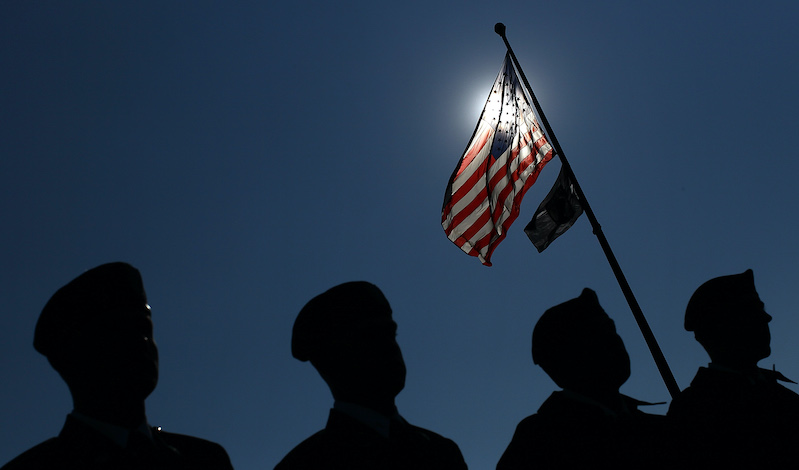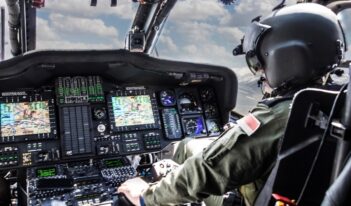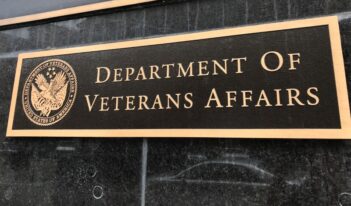
GAO recommends the U.S. Department of Defense improve servicemember credentialing programs.
Servicemembers who leave the military face a daunting question: What’s next?
Although military roles share direct civilian equivalents—such as air traffic controllers or radio operators—veterans often confront unnecessary retraining to attain civilian qualifications for a job they were already trained to perform. To address this problem, the U.S. Department of Defense offers credentialing programs to help servicemembers transfer their military skills to the civilian workforce.
But the Defense Department has limited evidence on the effectiveness of these credentialing programs, according to a recent report by the U.S. Government Accountability Office (GAO), the government oversight arm of the U.S. Congress. Specifically, GAO recommends that the Defense Department develop performance measures to track program effectiveness and improve the two credentialing options: Credentialing Opportunities Online (COOL) and United States Military Apprenticeship Program (USMAP).
The Defense Department does not directly issue any civilian-equivalent credentials, but the two programs—COOL and USMAP—facilitate credential attainment and veteran employment through different strategies.
COOL functions as an online platform accessible to all servicemembers that matches military occupational specialties with civilian occupations. The website details credentialing requirements for a servicemember’s desired post-military career path and shows possible timelines for completing the relevant qualifications. Separate sections are offered for each service to ensure users match their exact specialty with related national certifications and federal licenses. COOL also enables servicemembers to apply for Defense Department funding for costs associated with professional certification, including books, tuition, and exam fees.
USMAP is a formal military training program registered with the U.S. Department of Labor that enables enlisted servicemembers to complete civilian apprenticeship requirements while on active duty. As part of their military training in their specialty field, servicemembers complete thousands of hours of formal classroom instruction and on-the-job training. USMAP allows those hours to qualify as a trade-based registered apprenticeship. For no cost and no off-duty time demands, servicemembers receive a certificate of completion from the Labor Department that can lead to better employment prospects and higher wages.
The credentialing programs are well-used. Defense Department data showed that in 2020, more than 18,000 servicemembers participated in COOL, and nearly 13,000 completed at least one credential. In the same year, approximately 111,000 servicemembers participated in USMAP, and more than 17,000 completed an apprenticeship.
But GAO found that while the Defense Department monitors participation and completion in COOL and USMAP, limited evidence exists on whether the programs are meeting the intended goals of facilitating post-military employment.
The Defense Department has conducted two studies to evaluate the effectiveness of COOL and USMAP. Neither study, however, included all the military services—an important limitation, GAO notes, given that notable differences exist between how the branches promote and execute the programs. For example, concerning COOL, the Navy began funding credentialing expenses in 2007, while the Air Force and Marine Corps followed suit in 2015. The Army and Coast Guard only started paying credentialing expenses in 2020.
The first study, published in 2015, was sponsored by the Navy and used statistical analysis to assess whether Navy COOL reduced the probability of former sailors requiring unemployment payments. Although the study found that “successful participation may be effective in lowering unemployment for some sailors,” it concluded that it could not provide a more accurate assessment until COOL had existed for more time.
The second study, also published in 2015, was sponsored by the Labor Department and evaluated the Navy and Marine Corps implementation of USMAP through a series of focus groups and interviews. Although the assessment gathered information about how USMAP benefits recruitment and retention, GAO observed that the study only provided “preliminary insights into possible program effectiveness.” The study further noted that further evaluation of the program’s effectiveness could better estimate USMAP effects on outcomes within and outside the military.
GAO determined that the lack of information across the services has resulted in an evidence gap: Without adding performance measures to capture program data, the Defense Department cannot evaluate whether COOL and USMAP are effective.
Furthermore, the credentialing programs have grown over recent years. USMAP participation has increased by nearly 30 percent since 2016, and COOL expanded to the Coast Guard for full implementation in 2020.
The Defense Department has already taken steps to improve oversight of its credentialing programs. The recently issued Defense Department Instruction on Credentialing Programs established agency-wide guidance, policies, and requirements for COOL and USMAP to standardize performance measures and reporting across the military services.
Still, GAO concludes that the Defense Department has not fully assessed credentialing program employment effectiveness across its services, and that addressing the evidence gap would help the Defense Department meet its goals of helping servicemembers thrive in the civilian workforce after leaving the military.



